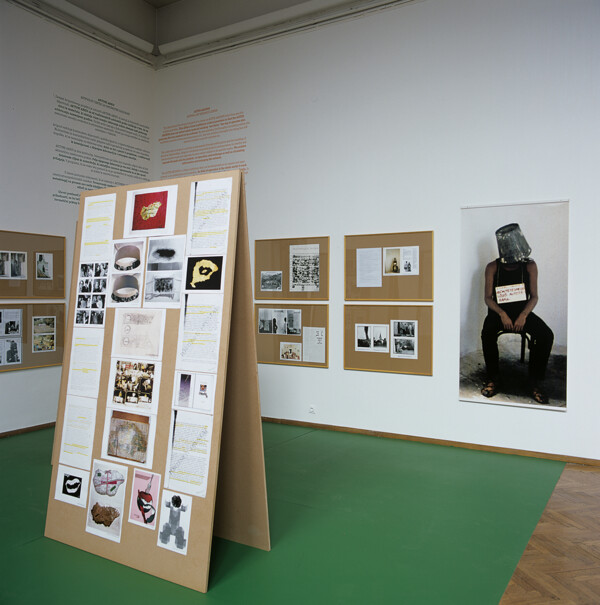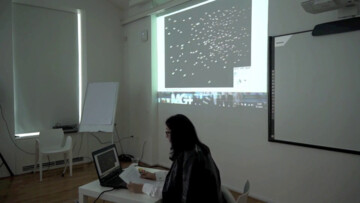Self-historicisation refers to any informal system of historicisation that is practised by artists who, because of the lack of a suitable collective history, have had to search for their own historical or interpretive context. In many parts of the non-Western world, such as Eastern Europe during the socialist period and even later, the local institutions that should have systematised neo-avant-garde art either did not exist or took a dismissive attitude towards such art. Consequently, the artists themselves were often forced to → archive documents relating to their own art, the art of others, or broader art movements, as well as the conditions of production.
Self-historicisation can be found in a number of different international contexts, and should in no way be viewed as the exclusive domain of non-Western artists. Nevertheless, given the existing interests of the globalising art system, we need to draw special attention to the differences within a world that seems increasingly homogeneous – especially, the differences between regions that are less standardised and regulated and those that are more so. It is in this context that I view the significance of self-historicisation, which in some places still represents one of the most important, if not the only, form of historicisation.
Among other things, self-historicisation reminds us that the dominant systems of art history are unable to present the state of affairs in a global world of differences. They are only superficially adapting to the new situation, mainly by including more and more art from around the world. But even as they do this, they remain essentially the same and, indeed, only further strengthen their power. Today the large hegemonic museums in the major Western art centres loudly claim to be presenting the global history of art, but they continue to speak about this history in the singular and from a single point of view. The Centre Pompidou, for example, is “going global”, the director says. Their main objective, however, is to preserve their influence and accumulate as many works as possible for their new universal collections. The primary motivation behind these new → universal histories remains ownership, and this is something that is impossible to oppose through counter-narratives, which would sooner or later be incorporated into the dominant stories. Such processes need to be exposed once and for all as processes of alienation. We need to advocate a multiplicity of narratives – ones that include transparent processes of their own emergence and their true location. Here a special place is occupied by self-historicisation, which is tied to the lasting and personal presence of the narrator.
The archives of self-historicisation include local marginalised art traditions presented by artist-archivists, and not from some external, objective position, as their own personal involvement in these traditions is viewed as essential. The artists are not merely interested in → correcting existing histories; they want to bring attention to the fundamental principle underlying the creation of these histories, the involvement of the individual, which always means excluding something. In place of universal collections based on the concept of power, they advocate universal archives, with all the heterogeneity, lack of system, and incompleteness inherent to such endeavours. Art archives created in self-historicisation processes underscore not only local identities but, even more, the universal experience of otherness. They are not so much about documents that testify to the authenticity of present or past. Rather, the artistic traditions they represent are here collected together with the traumas of the region, with everything that was repressed by the collective consciousness and repeated in the unconscious.

“Artpool” in Interrupted Histories, exhibition view, 2006. Courtesy of Moderna galerija, Ljubljana.
A number of important Eastern European artists – Artpool (Győrgy Galántai, Júlia Klaniczay), Zofia Kulik, Július Koller, and Lia Perjovschi and the CAA (Contemporary Art Archive), among others – have devoted a large part of their work to creating archives that today serve as vitally important sources of knowledge about unofficial art and the conditions of its production in countries under socialism. We can trace the Eastern European tradition of art archives developed by artists out of the need to contextualise their own art practices all the way to the present day. Here I want to mention especially the archives created by the group IRWIN, which I think are important not only because they include marginalised traditions, but also because they are explicitly concerned with the principles of marginalisation and the creation of history.

IRWIN, “Was is Kunst?”,1984–1996, NSK from Kapital to Capital: Neue Slowenische Kunst – The Event of the Final Decade of Yugoslavia, exhibition view, curated by Zdenka Badovinac, 2015. Photo courtesy by Moderna galerija, Ljubljana.
The question of how ideology and capital manipulate us through images has been an object of IRWIN’s research right from the beginning. In 1984, they began work on the painting series Was ist Kunst? which, after its completion in 1996, gave rise to a new series of works, Icons. The series Was ist Kunst? is an archive of images that derive from a variety of contexts, such as folk art, the Russian avant-garde, communist symbols, Nazi art, and modernism. The members of IRWIN saw the series as a kind of slot machine, in which the different motifs were colliding with each other for more than a decade, so as to generate, in 1996, the IRWIN “icons” – the motifs in Was ist Kunst? that were most often repeated by the five members of the group. In this manner, IRWIN specified five motifs, which they have been repeating in their work from that time to now. This process is presented by IRWIN in a grid of horizontal and vertical lines, which remind us that there is no single archetypal icon; there is only a classification table of images. In IRWIN’s grid, which acts as a system of differences, the five main motifs that emerged after a decade of collisions in Was ist Kunst? appear on the horizontal lines, while variations on the motifs by the five individual group members appear on the vertical lines. IRWIN’s classification system is based on a common generic principle tied to the eclectic cultural traditions of small nations.
Another project in which IRWIN illustrated how history emerges was East Art Map (2002–2005). Here the goal was to map Eastern European art from the past fifty years. They invited experts and artists from the different Eastern European countries to work with them by proposing the most important artists from their own areas, and highlighting the connections between local artists as well as their connections with Western artists. The results were then put on a map, with red lines showing the connections between individuals and blue lines those between groups. Even at first glance we see that the map is not particularly systematic, and that many artists have been left without any connections. In their introduction to the accompanying book East Art Map, in which various texts dealt with specific topics relating to Eastern European Art, IRWIN assessed the results of the mapping project. They described their map of Eastern European art as an arbitrary work, since other names might have appeared on it as well. They also found that for the most part the selectors had not provided information about the relations between local artists or comparisons between East and West. They also noticed that the different selectors had used very heterogeneous – that is, unsystematic – criteria in their selections. Finally, they said they were not surprised by such results, which were, after all, the consequence of several decades of Eastern European isolation.
Despite the fact that the selection of the represented artists was not made by IRWIN themselves but by the curators and artists they had invited, one of the key results of the project was, surely, the group’s discovery that it was (and remains) impossible to forge a collective narrative of Eastern European art. The IRWIN group have themselves, since the early 1990s, carried out many projects where they tried to determine the connections that Eastern European artists have both with each other and with artists from other areas. All this served the effort to construct a history. Connections, referential fields, and collisions that generate the icons without which we could not imagine the histories that have been written up to now – these have always been of crucial importance in this construction. For future histories, it seems, one of the essential questions will be that of the collection versus the archive, a referential system of artefacts or a heterogeneous apparatus of remembering.





